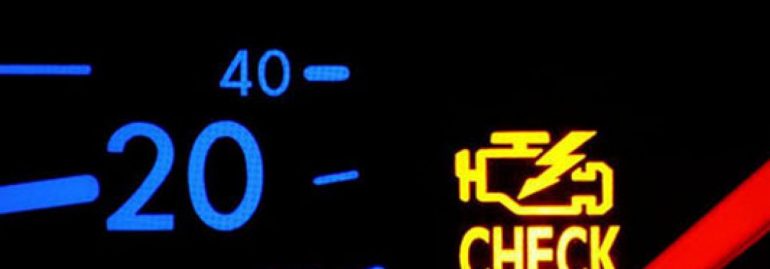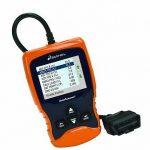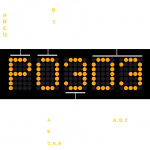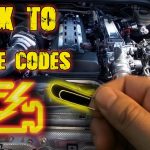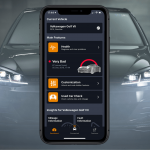
Learning how to read codes on a car can be incredibly useful for many reasons. It gives you peace of mind knowing that you can fix minor problems before they become bigger ones. For example, you can quickly diagnose whether a loose gas cap is to blame for your check engine light.
While most of us would still want to take our car to a mechanic, knowing how to read codes on a car can ensure that you get the best possible service.
OBD
If you’re getting warnings from your car’s Check Engine Light (or CEL) and you want to know what’s wrong, you should look up the OBD codes. This system consists of a series of numbers and letters that indicate a specific problem with your car. Some codes are specific to a brand of car, while others are generic.
If you don’t know which code your car is showing, you should try using the links below to learn more about the common trouble codes.
The first two characters on the code represent the generic or manufacturer specific code. The next number represents the part of the car that’s affected. These areas include misfiring and ignition, auxiliary emission controls, vehicle speed control, and the transmission.
Once you’ve determined which code is causing your car to stop working properly, it’s time to take it to a mechanic for a proper diagnosis. Listed below are some common trouble codes and how they affect your car.
EVAP codes identify problems with the vehicle’s emissions control system (EVAP). These systems prevent the emission of exhaust fumes into the atmosphere. EVAP codes also monitor idling and speed controls of a vehicle. Speed sensors and faulty computer systems can also cause this code to display.
Other codes monitor the transmission, which most commonly malfunctions when the engine is running. To properly diagnose problems with your vehicle’s on-board diagnostics system, you’ll need to know how to read OBD codes on a car.
OBD codes on a car are a way for your car to report its self-diagnostic information. When a problem is detected, your car will turn on its check engine light, letting you know the exact cause of the problem. OBD2 codes are used by mechanics and drivers alike to determine what the problem is and the necessary action to take. If you don’t know what the code means, you can use a code reader.
DTC
You can learn how to read DTC codes on a car by using a diagnostic connector. A basic code reader will give you a one-line description of each code, and in some cases, you can get the definition of the code as well. If you are not sure what the DTC codes mean, consult your vehicle’s manual or manufacturer. You can also purchase tools that make reading DTC codes on a car easy and convenient.
A diagnostic trouble code (DTC) is a code produced by your vehicle’s on-board diagnostics (OBD) system. It represents a problem and helps you identify it before it becomes a major issue. For example, a P030X code indicates a cylinder misfire, but it does not tell you why. While the DTC system is not perfect, it does give you a significant advantage when it comes to maintenance and repair.
DTC codes are not specific to one component of a car; they serve as a guide for the mechanic to perform diagnostics and repair. Most vehicles built after 1996 have the OBD-II diagnostic connector. DTC codes are made up of five characters. Each character means something different and should be interpreted accordingly. To determine which DTC code relates to a particular fault, use the OBD-II diagnostic connector.
A real-time vehicle diagnostics system can also detect DTC codes that are a warning of imminent engine failure. This technology allows drivers to determine the severity of the problem and find the closest service center for the repair. Non-critical DTC fault codes, such as the one indicating an emissions-related problem, still require attention and repair. Examples of these include the Check Engine Light and the Malfunction Indicator Lamp (MIL).
Carly app
If you’ve ever wondered how to read a car’s codes, you’ve probably wondered what it takes to get accurate readings. Carly is an app that uses the OBD port to access the car’s data and translate it into useful insights. It helps you understand what’s wrong with your car, as well as make informed decisions about maintenance and customization. The app works with both Android and iOS devices.
The Carly app is much simpler to use than iCarsoft, which makes it easy to scan any car. It also scans every system on the car at once, creating a PDF report for you to download and view later. The app also lets you customize the car and even change settings such as seatbelt warnings and lighting. Users can run a full scan while driving. Because it recognizes the car model, it can quickly identify the cause of a car’s problems.
This high-end app comes with many features, including coding, but it’s not cheap. Although it costs about $120, the app and adapter are free and come with a one-time trial. If you’d like to access more diagnostic features, you can choose to subscribe to Carly. You can choose a subscription that covers just one car or a multi-car plan. If you want to buy the app for multiple cars, you can also download a BMW version, which is available on the Google Play Store.
The Carly app can read car codes on BMW, Mercedes-Benz, and Audi. You’ll need an OBD2 adapter to use it. You can download the Carly app from the App Store for free or purchase a subscription for $60+tax. It costs around the same price as BimmerCode and comes with a lifetime update guarantee. It works on both Android and iOS. It’s easy to use and works for BMW models.
Odometer method
One of the easiest ways to read a check engine light code without using a scanner is to look at the car’s odometer. This method is suitable for newer vehicles that have an OBDII system. To obtain the code, hold down the odometer buttons while turning on the car’s ignition. Alternatively, you can try using a jumper wire or paperclip.
The assembly line diagnostic lead is usually located on the dashboard near the driver’s side. Check your car manual to find the exact location. Connect the wire or paperclip to the terminals, and wait for the display to show the code. The code will then be displayed on the dash. This method works best with cars that use OBD1.
A different technique is to manually roll back the odometer. This method will take hundreds of kilometres off the car’s odometer reading. But be careful: you might damage the car and endanger yourself! Odometer rollback is a time-honored trick that people have been using for decades to fix problems. When you use it, you can even customize your car with it. It’s a good idea to keep an eye on it regularly.
Another way to read codes from the odometer is to get a DIY diagnostic tool. You can find this device at any auto parts store. This tool can easily be plugged into the car’s OBD port. The tool can provide the code as well as the data of what the code means. Moreover, you can even download the error code on your own, and use it to fix the problem yourself.
Getting a code from a specific part of the car
While your car’s computer can store codes to tell you what’s wrong, the codes themselves are not always indicative of what’s wrong. The code may point to a general area of malfunction, but that doesn’t mean it necessarily means a specific part needs repair. It may be that the sensor itself is damaged or the wiring harness is corroded. In this situation, further diagnostics will be necessary.
The first step is to decode the DTC. This code is not specific to any particular part of the car, but it does tell the mechanic what to test to find the problem. The code will vary between different car models. The first digit is the general issue, while the second and third digits are manufacturer specific. The final two digits are the specific fault description, which will need to be decoded with a pre-approved key.
When you are unable to diagnose a problem using the OBD codes, you can contact a technician for help. Some cars have hundreds of codes, and identifying the cause is critical. Some common problems are listed below. While some codes may indicate that a part of the car is malfunctioning, others will simply indicate a general problem. For example, a P0442 code means a leak in the evaporative emission system.
Online car repair manuals are a great resource for diagnosing a problem on your car. These manuals contain technical service bulletins, step-by-step diagnostic instructions, and component locators that will show you how to troubleshoot the problem. A code reader, scanner, and internet connection are essential. To get the most out of these resources, you should visit the website of a reputable automotive service center and ask for assistance.


